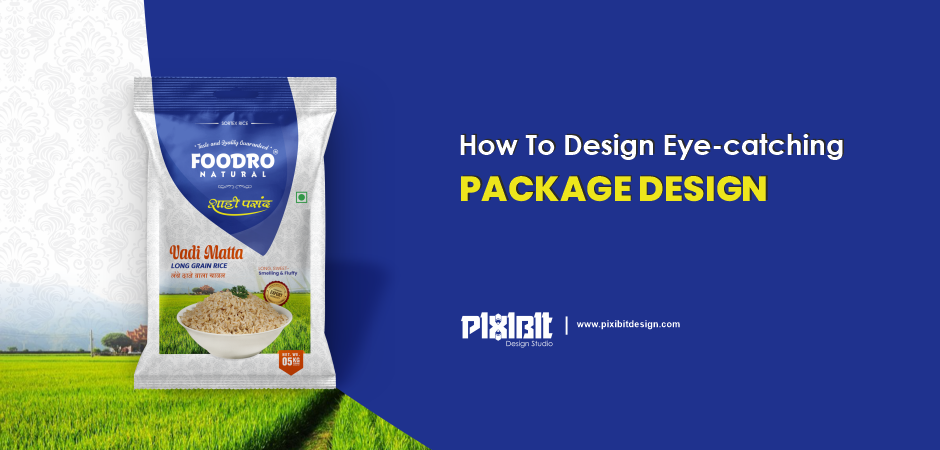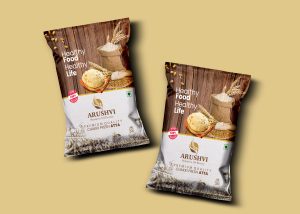

Introduction
The most successful and profitable brands are those that stand out uniquely- and package design is the most important element for an effective brand to stand out. Even if you are developing a new brand for launching into the market or rebranding an existing brand, the right package design can give your brand important visibility. It helps your products to stand out on retail shelves in markets.
Eye-catching packaging should make a physical and psychological connection. The packaging recognizes the product and encourages consumers that their purchase is the right one.
However, this can only occur when brand owners compliment the qualities of the product’s packaging with what consumers desire. Effective and eye-catching package design is more than simply being different because poor packaging design can destroy your branding efforts and vanish your profits. Packaging should never stop consumers from making a purchase. There are some tips that marketers and design experts should use.
1. Begin Designing the Packaging Early
Planning and designing the packaging in the Product Development Process is a must. Draft several ideas to get a visual of what the end product should be like Packaging ideas might also come from products in a different category. Establish mock-ups based on target market research.
2. Study the Competition
Differentiate what few of the competitors have done with their packaging. While it’s essential for your packaging to stand apart, you also need to consider the known “lingo” of product category packaging—the features that signify what the product is, in a way your customers are already familiar with. Look at successful brands and consider what their package design has in common.
This does not certainly mention just packaging colors, but also the physical or structural design, materials used, on-pack messaging, and so forth. Your packaging must be different but your customers must still be capable to relate to it in a way that’s relevant to them and their needs within that product category.
3. Keep it simple
The most successful brand packaging is well-known and easily recognizable—and when it comes to package design, usually less is more. Your product packaging should communicate your brand at a glance, and instantly tell the customer what your product is for.
Developing a clear and simple package design will go a long way toward giving your brand enhanced visibility on store shelves. The product should be easily transportable, comprises applicable warnings, and also preserve and protect the product.
4. Keep it Honest
The packaging design should make your product look engaging, but not at the expense of honesty. A confusing package design that promises something not contained in the package will damage your reputation and your brand—for example, depicting a chocolate-drenched dessert on a tin of simple chocolate-flavored biscuits is not an accurate representation of the product inside!
5. Be Authentic
Authenticity can be a hard feature to define, but your customers know it when they see it. Work to develop packaging that is authentic to your brand’s values, promise, story, alignments, positioning statements, etc. A sense of character and originality infused with your packaging design can help you build a memorable brand that engages customers while also enhancing brand perceptions in terms of being seen as a brand that is authentic – true to its purpose.
6. Consider Branding and Positioning
Market Positioning and Branding are important factors to take into consideration. Knowing the target market for a particular product includes identifying their expectations for the product. Investigating the consumers will help determine the most powerful and eye-catching packaging. Find out how competitors’ products are failing to meet needs and utilize them.
7. Identify How it will be sold
Selling products over the Internet is a little different than having products in a brick-and-mortar store. Consumers are not able to touch and feel the product before buying, so the packaging must attract other senses. Still, a product that sits on a shelf has to stand out from the competing products sufficiently for consumers to buy it.
8. Design for Durability
Depending on the supply chain process and the shelf life of your products, your packaging may require increased longevity. Long-lasting packaging is especially important for slower-moving, high-value, consumer goods, but FMCG products will also require a high degree of durability. Damaged packaging at the point of sale or post-sale can have a very harmful effect on your brand, as customers will view it as “cheap” or low quality.
9. Think Green
With more customers increasingly aware of environmental issues, investing in eco-friendly, sustainable packaging design is a smart move for any brand, not to mention helping improve your brand’s carbon footprint.
Whether the packaging is limited to reducing the amount of waste or made from recycled, biodegradable, or reusable materials, going green with your packaging can make your products more attractive and premium to customers. Sustainability is an increasingly important problem to customers and ‘responsible’ or ‘caring’ brands are seen to be more desirable.
10. Differentiate Visually
A twist on the standard design styles for your product categories can help your brand enjoy increased visibility, allowing you to stand out from a sea of similar products. For instance, if most of your competitors use a horizontal layout, design along the vertical in your packaging. If the majority of similar items feature product photography, consider type-based designs, icons, or illustrations.
The choice of signature brand colors is another great way to differentiate. One striking example is Rachel’s Organic products, which use primarily black packaging for products such as butter and yogurt to jump out on retail shelves, or O’Egg which uses pink on its white egg packaging.
11. Pay Attention to Typography
The words used on your package design matter—how they look and what they say. Beautiful typography is an eye-catching differentiator for your packaging. Choose distinctive, premium fonts with high readability, and pay attention to spacing (kerning), the size of the text, and the color in comparison to the rest of the package design.
The naming conventions used, together with the language style chosen and messages conveyed in the creative copywriting on your packaging design can add immensely to increasing your brand’s personality and connecting emotionally with your primary audience. Remember, people buy with emotion and explain with rationale—male or female.
12. Hold the Consumer’s Attention
Target market research will disclose ideas that will get and hold consumers’ attention. The average consumer has a short observation span and may need many whistles and bells before determining whether to buy the product.
However, the packaging should not have so many trends and colors that it becomes meaningless. Finding the perfect balance may come through trial and error. Maintain consumer loyalty by making little changes to the packaging at least every two years.
13. Consider it an Investment
Many brands fail to narrate enough importance of packaging design, and this is a mistake that will eventually cost you in multiple ways. Investing in high-quality packaging will attract consumers’ belief that they are buying something valuable. When you increase the perceived value of your brand through exclusive, creative, carefully evaluated, and well-executed packaging design, you’re capable to compete with other products in your range and charge a premium price.
14. Protect your product
The exterior details are essential to catch the attention of consumers and potential consumers. However, the packaging should also maintain the product until consumers are ready to use it. Think about how long the product might have to remain on the store shelves or in the supply chain process.
Slow-moving consumer goods might take many months or years to reach their final destination. Therefore, the packaging materials should be able to resist the elements with which it comes into contact.
15. Consider Possible Production and Manufacturing Constraints
It’s essential to consider production line requirements, and how your product will fill the packaging – is it hand packed or on an automated production line? What are the particular packing requirements of both those environments?
When designing a pack, it’s also really essential to take into account the final look of the product inside the package, to ensure an attractive overall presentation. Make sure the packaging is not too loose or too tight, that it appealingly displays the product, and that the colors or textures and so forth of the actual product are increased through the design of your packaging.
If something tastes wonderful but visually doesn’t look too attractive then maybe you should not make it visible within your packaging design. Alternatively, if yours is the kind of product that visually sells very well, specifically when enhanced with great packaging—like a lot of bakery goods or confectionery—or consumers need to see it to make their purchasing decision such as with definite perishables like meat, fish or vegetables then you need to take this into account within your packaging design.
16. Choose Special Materials
Giving your package design a luxurious detail can help your brand stand out. Consider invoking the customer’s sense of touch through materials like velvet, wood veneer, or higher-quality paper. Embossing, wax seals, hot foil stamping, and letterpress seals can also add a premium touch to your pack design.
17. Add the Personal Touch
Handmade or hand-crafted can deliver a stand-out appearance to your brand packaging. Details that appear handwritten, handcrafted, hand-tied, or individually applied can add to a prime sense of personalization for your products.
You can even create an overall handmade look for your products with creative use of production techniques—UK-based organic food company Kallo uses illustrations and traditional lino printing to give their product packaging a handmade appeal.
Conclusion
Good packaging design is a critical part of any successful brand strategy if you want to grow your business and increase your profitability. The Pixibit Design Studio is a leading Graphic design company that provides innovative services in Digital Branding. The Pixibit Design studio has expert graphic designers for making attractive packaging designs.

